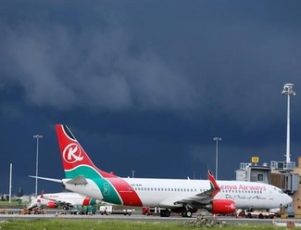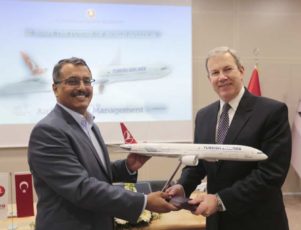By Duncan Miriri
NAIROBI (Reuters) – Kenya will offer $750 million in guarantees to Kenya Airways’ existing creditors to help the heavily-indebted carrier secure financing from other sources to complete its recovery, a cabinet document showed on Tuesday. The guarantees, approved by the cabinet, will cover $525 million owed to the U.S. Exim Bank and the rest to local lenders, said the document seen by Reuters.
The airline, partly-owned by Air France KLM and the Kenyan government, has struggled to return to profit after tourist traffic slumped four years ago following a spate of attacks by Somalia-based Islamist militants.
The government will also convert its existing loans to the carrier into equity, it said. It was not immediately clear how much it has lent the carrier, but a source at the airline said it was a “significant” amount lent over time. The plan to guarantee the existing debt will be taken to the National Assembly for approval, the government said.
“The guarantees would be in exchange for material concessions to be provided as part of the financial restructuring which would secure future funding for the company,” the cabinet document said, without giving details on the concessions.
The government views the airline as a strategic asset, supporting other industries such as tourism and encouraging investments from abroad. Several international firms have set up their regional headquarters in Nairobi to take advantage of Kenya Airways’ extensive route network on the continent. Kenya Airways ferries 12,000 passengers a day on its fleet of Boeing and Embraer planes to destinations such as Juba and Accra.
At 1012 GMT, Kenya Airways shares were down 1.5 percent at 6.65 shillings.
The government would not provide additional cash as part of the restructuring of the airline, it added.
The debt owed to the U.S Exim bank is related to the financing of the purchase of the carrier’s Boeing planes. Kenya Airways says the financial restructuring will involve restructuring debt and securing additional capital to help dig itself out of a position of negative equity, and attain a better balance between cash flow and debt repayments.
(Reporting by Duncan Miriri; Editing by Elias Biryabarema and Mark Potter)


